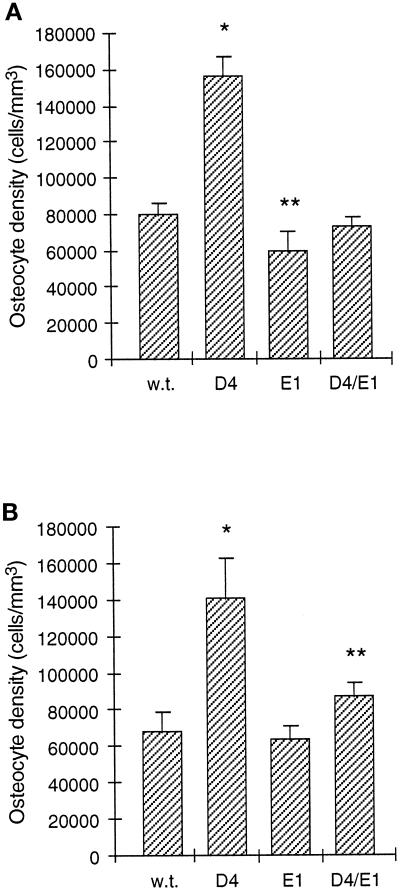Figure 3.
Effect of osteoblastic expression of a dominant-negative type II TGF-β receptor on osteocyte density in wild-type and D4 mice at day 35. Transgenic E1 mice overexpressing a truncated TGF-β receptor in osteoblasts were crossed to D4 mice overexpressing osteoblastic TGF-β2 to generate double transgenic D4/E1 mice. Values represent the mean ± SD. (A) Osteocyte density in the distal epiphysis of the femur, where bone resorption is present. The osteocyte density in D4 mice (n = 5; ∗) was significantly elevated compared with wild-type (n = 6; p < 0.0001), and the osteocyte density in E1 mice (n = 5; ∗∗) was significantly reduced compared with wild-type (p < 0.005). The osteocyte density in D4/E1 mice (n = 6) was not significantly different from wild-type. (B) Osteocyte density in cortical bone from the femoral diaphysis at the level of the third trochanter, where periosteal bone resorption is absent. The osteocyte density in D4 mice (n = 5; ∗) was significantly elevated compared with wild-type (n = 6; p < 0.0001), whereas the osteocyte density in E1 mice (n = 5) was not significantly reduced compared with wild-type. The osteocyte density in D4/E1 mice (n = 6; ∗∗) was significantly elevated compared with wild-type (p < 0.005) and significantly reduced compared with D4 (p < 0.0005).

